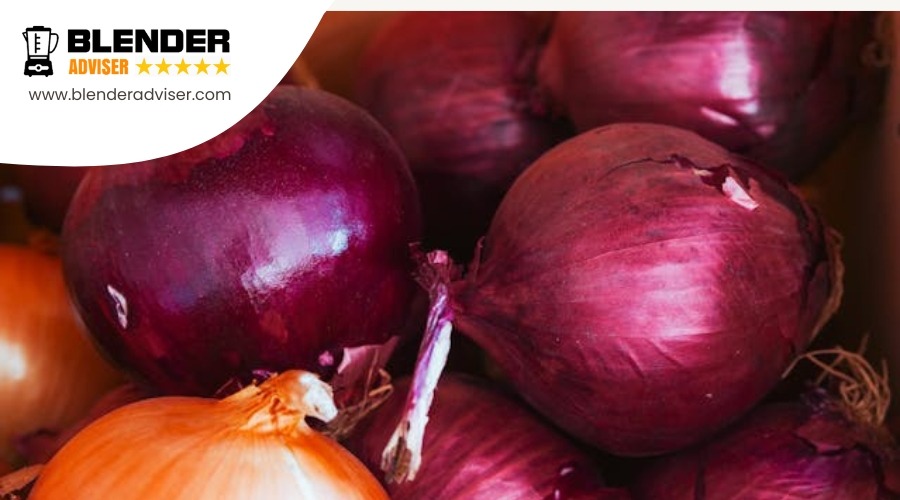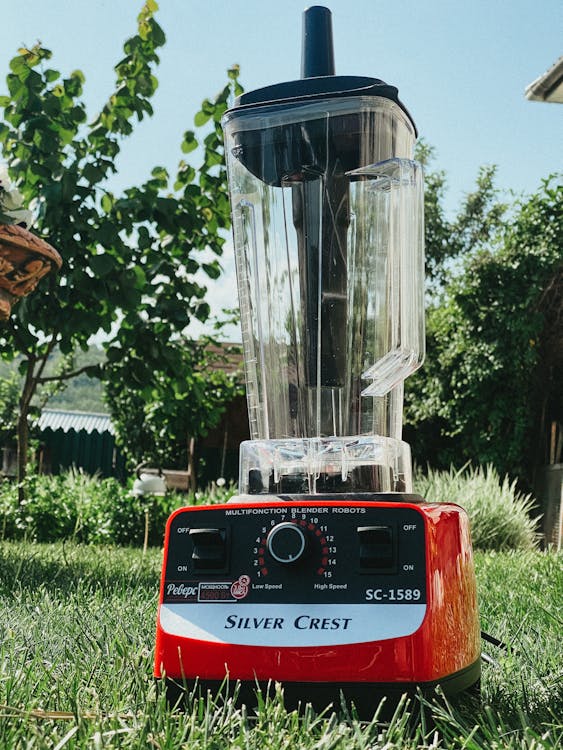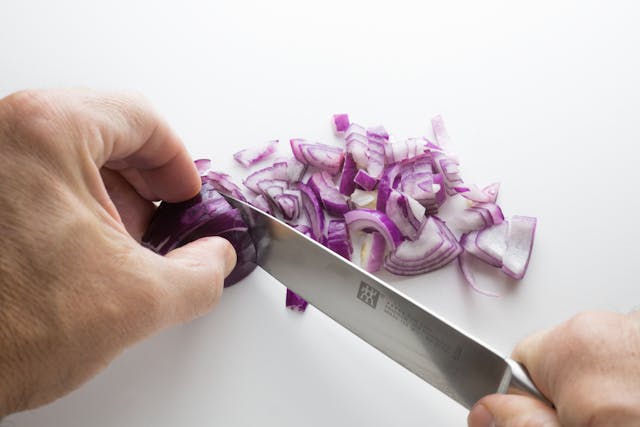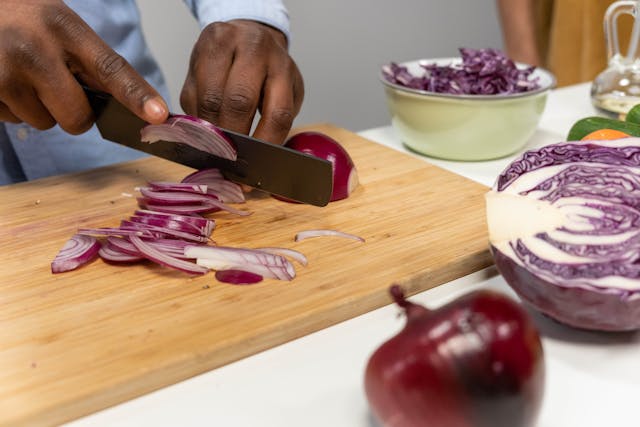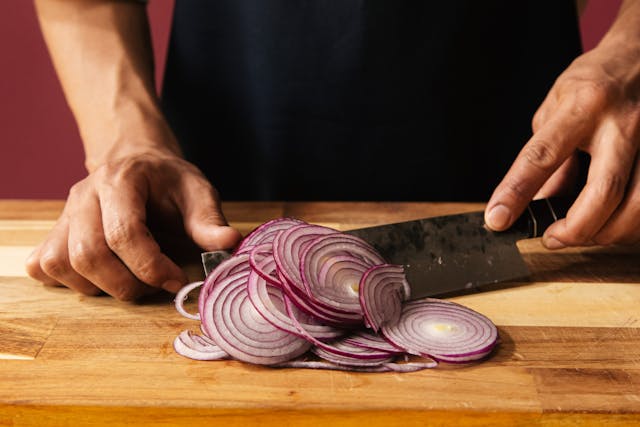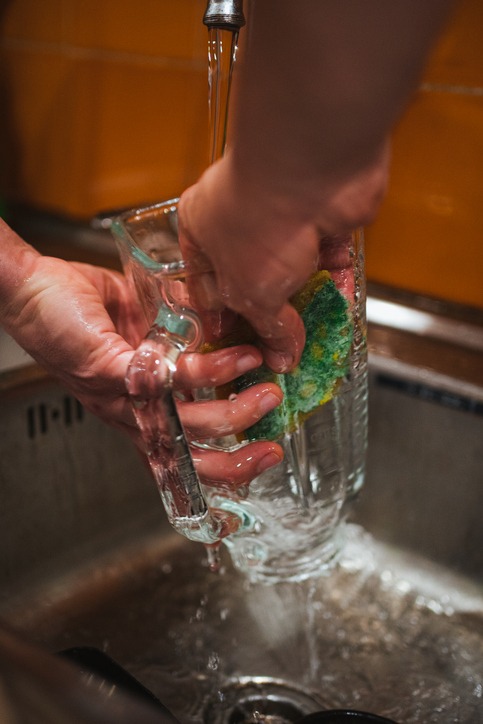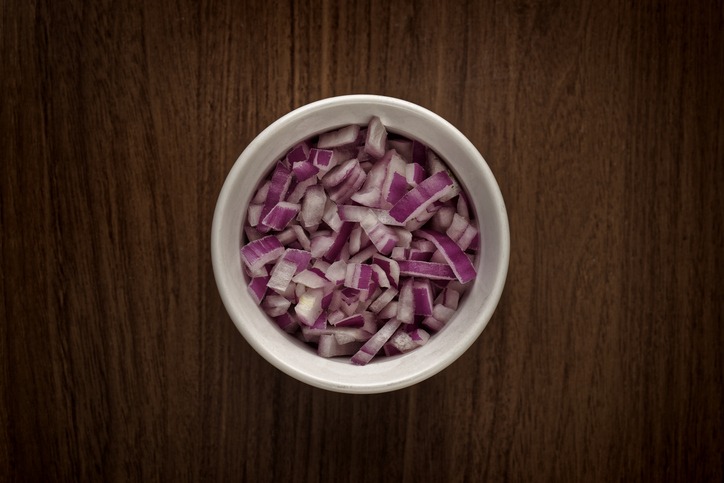In the modern age, where virtually everything has entered the digital era, it might surprise you to discover that, yes, you can indeed put onions in a blender—no app required. Before you haul your kitchen into the 21st century by blending those tear-jerkers, there are a few tricks and tips you’ll need to know to ensure you’re not left with an onion smoothie. From the correct way to prepare your onions to mastering the art of the pulse, there’s a method to this madness.
Let’s explore how you can save both time and tears, leaving you wondering why you haven’t been blending your onions all along.
Considering a Blender
When considering a blender for your kitchen, it’s worth noting that it can greatly simplify tasks like chopping onions, saving you both time and tears. The efficiency of a blender in transforming onions into small, uniform pieces can’t be overstated. You’re not just chopping; you’re ensuring each piece is consistent, which is crucial for even cooking and flavor distribution in your dishes.
Using a blender to chop onions also means you’re saving a considerable amount of time and effort compared to the traditional hand chopping. Think about it: no more tedious peeling, slicing, and dicing. Just peel, quarter, toss them into the blender, and in a matter of seconds, you’ve got perfectly chopped onions. This method doesn’t just cut down on prep time; it significantly reduces the risk of those tear-jerking moments caused by manually cutting onions.
Preparing Your Onions
Before you start blending, you’ll need to prepare your onions properly. First, select fresh onions and clean them thoroughly to ensure they’re free from dirt. Then, chop them into smaller pieces, making sure they’re the right size for your blender to handle efficiently.
Selecting Fresh Onions
To ensure your blended onions enhance your dishes, start by selecting the freshest ones, focusing on those that are firm, without soft spots or mold. When chopping onions before using a blender, it’s crucial to pick ones with dry, papery skins and no signs of sprouting.
This ensures a clean blending process, helping you achieve the desired consistency for even cooking. Avoid onions with strong odors or visible signs of decay, as these can affect the taste of your dishes.
Opt for onions that feel heavy for their size, indicating they’re fresh and have a high moisture content. Selecting onions with intact, unblemished outer layers is also essential to ensure a smooth and efficient blending experience.
Onion Cleaning Methods
Properly preparing your onions by cleaning and peeling them ensures a smoother blending process. Before you use your blender to chop onions, you’ll want to make sure they’re ready for action. This means:
- Peeling the outer skin carefully. It’s not just about cleanliness; it’s about ensuring nothing hinders the even chopping you’re aiming for.
- Cutting the onions into manageable chunks. You’re not just prepping; you’re ensuring that each piece gets evenly chopped, avoiding any chances of over-blending.
- Using a sharp knife for clean cuts. This isn’t merely about skill; it’s about preventing the squishing of your onions, which can affect how they’re blended.
Chopping Before Blending
Preparing your onions for blending starts with peeling the outer skin and chopping them into manageable chunks. To chop an onion effectively, first, ensure you’re using a sharp knife. This avoids squishing the onion and helps achieve clean cuts.
It’s important to keep the pieces small enough for the blender to handle effectively, ensuring the consistency of the chopped onions meets your needs. Whether you’re aiming for finely chopped onions or a more coarse texture, how you prepare the onion before using the blender plays a crucial role. Use a cutting board for stability and safety.
Loading Techniques
Before you toss those onions into the blender, it’s crucial to consider how you’re cutting them and the blender’s capacity. Chopping your onions into manageable sizes ensures they blend evenly without straining your machine.
Also, remember not to overfill the blender to avoid uneven chops and potential messes.
Proper Cutting Sizes
To ensure your onions blend evenly without turning into puree, start by cutting them into manageable chunks that easily fit in the blender jar. Using a sharp knife for clean cuts will maintain consistency in your onion pieces, keeping them small enough for even chopping and to avoid over-blending. It’s crucial to pulse the blender instead of running it continuously. This technique ensures your onions are chopped just right for even cooking without ending up as a mushy mess.
Consider these emotional rollercoasters while preparing your onions:
- The satisfaction of achieving perfectly chopped onions for your culinary creations.
- The relief of avoiding the dreaded onion puree, thanks to proper cutting sizes.
- The pride in mastering the art of using your blender to its fullest potential, without overfilling.
Blender Capacity Limits
Understanding the capacity limits of your blender is crucial when chopping onions to ensure even and efficient results. You’ll want to keep it only halfway to two-thirds full with onion pieces.
Overfilling your blender can lead to uneven chopping, affecting the final outcome and ensuring even cooking. Sticking to these blender capacity limits is an efficient method that helps you maintain control over the chopping process, guaranteeing consistent results every time.
This prevents overcrowding and allows for efficient chopping, crucial for achieving the desired size and consistency of your onions. Always check the consistency as you go, adjusting as necessary to avoid over-processing.
Adhering to these guidelines ensures your onions are perfectly prepared for your culinary creations.
Mastering the Pulse
Mastering the pulse function is key to chopping onions effectively in a blender, ensuring you don’t end up with an unintentional puree. When you first consider putting onions in your blender, the thought might fill you with a mix of curiosity and apprehension. But, with the pulse function, you gain control over the chopping process, transforming it from a daunting task into a manageable, even enjoyable, kitchen activity. Here’s why mastering the pulse function can evoke such strong emotions:
- Control: Each short pulse gives you the power to dictate the outcome, making you feel like a skilled chef in your own kitchen.
- Precision: By adjusting the pulse chops as needed, you achieve the perfect chop every time, which can be incredibly satisfying.
- Confidence: Knowing you can prevent the onions from turning into a puree fills you with a sense of culinary mastery.
Checking Consistency
After mastering the pulse function to chop onions in your blender, it’s crucial you open the jar to check the consistency of the chopped onions, ensuring they’re not overdone. Given that blenders come in various powers and speeds, this step is essential to avoid over-blending, which can quickly turn your onions into a watery texture rather than the desired size for your culinary creations.
To achieve the perfect consistency, give more short pulses if needed. This gradual approach allows you to better control the texture of the onions. Each blender works differently, so adjusting the chopping process based on the consistency of the chopped onions is key. You’re aiming for uniform size pieces, not an onion puree, unless that’s your goal for a specific recipe.
Monitoring the blending process closely ensures that the onions are precisely how you want them. Remember, it’s easier to add more pulses to achieve the desired size than to fix over-blended onions. So, always check the consistency before deciding if you’re done, to ensure your onions enhance your dishes just as you intend.
Cleaning After Use
Once you’ve finished blending onions, it’s crucial to clean your blender right away to prevent lingering smells and residue. The sharp, pungent aroma of onions can stick to your blender’s parts, making your next smoothie taste less than refreshing.
Here’s how you can keep your blender clean and odor-free after blending onions:
- Rinse Thoroughly: Immediately rinse the blender jar and blade with warm, soapy water. This step helps remove any onion residue that could cling to the surfaces and start to smell.
- Scrub Carefully: Use a sponge or brush to scrub the blender components well. It’s essential to get rid of every last bit of onion to ensure your blender is completely clean. This step also prevents any potential mold or mildew growth by removing all organic material.
- Wipe the Base: Since you can’t submerge the blender base in water, take a damp cloth and carefully wipe down the exterior to remove any spills or splatters. This keeps your blender looking good and functioning properly.
After cleaning, let all the parts air dry completely before reassembling. This prevents any moisture from being trapped inside, which could lead to unpleasant odors or even mold.
Storage Solutions
Storing your chopped onions correctly can extend their freshness and prevent your fridge from absorbing unwanted odors. Once you’ve used your blender to chop onions, it’s crucial to store them properly. If you’re planning to use them within a week, pop them in an airtight container or a resealable plastic bag and place it in the refrigerator. This method not only keeps them fresh but also stops the spread of their pungent smell to other items in your fridge.
For longer storage, the freezer becomes your best friend. Chopped onions can last up to 6 months when frozen. Just make sure to use a sealed container or a resealable bag designed for freezer use. This tactic prevents freezer burn and maintains the quality of your onions. Don’t forget to label each container or bag with the date of storage. This simple step helps you track how long they’ve been frozen and use them in a timely manner.
Embracing the Benefits
By putting onions in a blender, you’ll save both time and tears during your cooking process. The efficiency of using a blender to chop onions can’t be overstated. Not only does it make the preparation quicker, but it also ensures you’re not left wiping away tears instead of focusing on your recipe.
Let’s delve into the benefits that truly make a difference in your kitchen experience:
- Time-Saving: Imagine chopping a large batch of onions within minutes. The blender allows you to process multiple onions at once, significantly cutting down on prep time.
- Uniformity in Chop Size: Consistency is key in cooking. A blender ensures that all onion pieces are of similar size, leading to even cooking and a harmonious blend of flavors in your dishes.
- Tear-Free Cooking: The dreaded sting of onion tears becomes a thing of the past. By using a blender, you’re not exposed to the tear-inducing gases released during manual chopping.
Embracing the use of a blender for chopping onions brings not only efficiency but also enhances the overall quality and enjoyment of meal preparation. Say goodbye to the days of tedious chopping and hello to a more streamlined, enjoyable cooking experience.
Conclusion
Absolutely, you can toss onions into your blender to chop them up quickly and efficiently. Just remember to peel and cut them into smaller pieces first. Use the pulse feature to keep control and avoid ending up with onion puree. Always check the texture after each pulse. Once you’re done, give your blender a good clean to get rid of the onion smell. This method not only saves time but also spares you from the tears.
Embrace the convenience and enjoy the benefits!

